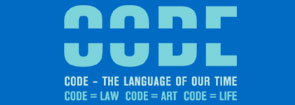| |
|
|
|
|
||
|
||||||||||||||||||||
| |
|
|
|
|
 |
|
 |
|||
| |
||||||||||
| |
||||||||||
 |
|
|||||||||
| |
||||||||||
| |
||||||||||
| |
||||||||||
| |
|
Joe Paradiso on the Interactive Art Jury
You are the director of MIT Media Lab's Responsive Environment Group. Can you explain what a "responsive environment" is? Joe Paradiso: A "Responsive Environment" is a space or setting where your actions are detected through sensing systems of various sorts, then mapped into an electronic media response. Responsive Environments can be interactive installations, musical interfaces, human-computer interfaces, medical diagnosis and therapy systems, etc. The name came when I established the group right after being the chief technologist for the "Brain Opera", the most extensive responsive environment that the Media Lab has developed. Admittedly, it's an old name that extends back at least to the work of Myron Krueger. I may be changing the group's name soon to "Sensate Media", to reflect some of our newer interests in dense sensor/processor networks and electronic skins. One of your passion is music. You have developed an electronic music syntheziser, you are composer, and you are developing musical interfaces. How will these new technical gadgets change the way music is made? Joe Paradiso: Electronic and computer-based tools have already drastically changed the way we produce music. Looking further, we can see the field evolving towards new ways of controlling electronic music. Although there is still exciting work to do in music synthesis, it's a fairly mature topic. Already, the processing power available in a standard general purpose computer can synthesize nearly any sound while allowing fine control over much of its nuance - in fact such control is required for synthesized sound to attain the complexity that we associate with the sound of acoustic instruments. How to attain that control is an active area of research, involving transduction of user input, sensor fusion and pattern recognition, and effective mapping of these features into sound synthesis parameters. We haven't yet seen the instruments of tomorrow that can contend with and perhaps displace the canonical form factors of keyboards, strings, wind, and percussion that now dominate music. Will research in the field of responsive environments, sensing technology, tracking systems etc. bring forth a new concept of computer? What are the implications for everyday life? What are your visions? Joe Paradiso: Already our notion of what a computer is begins to blur. As Bill Buxton and others have pointed out, most people don't recognize a computer by it's processor, but rather by the associated interface devices. In fact, the importance of any particular processor will diminish when networking is pervasive; what we think of as our "computer" will be the suite of tools that we use to interact with the digital world. And this is what research in responsive environments, tangible media, ubiquitous computing, the disappearing computer, ambient computing, pervasive computing, etc. (it has many names and flavors) seeks to redefine. Which artistic project are you working on in the moment? Joe Paradiso: We've recently finished several projects that have been shown in installation; the most recent rendition of our interactive window at SIGGRAPH 2002 (www.media.mit.edu/resenv/Tapper/SG2002.html), a version of our immersive carpet system that's still running at the MIT Museum (web.media.mit.edu/~joep/SpectrumWeb/captions/Carpet.html), and a fun "giveaway" interface to explore interactive music with very large groups (www.media.mit.edu/resenv/GiveawaySensors/index.html). We're gearing up now to work on adaptive musical interfaces that learn from their players and dense, multisensor wireless packages for instrumenting dance ensembles. Our work on electronic skins and "Pushpin Computers" (www.media.mit.edu/resenv/Pushpin/) should also have an artistic outlet before too long ... It is the first time that you are member of the Prix Ars Electronica jury. What kind of projects do you expect and hope to see? Which criteria must apply so that you would award a project a Golden Nica? Joe Paradiso: As Ars Electronica has always attracted the world's best and often most provocative electronic artists, I look forward to an extremely stimulating batch of submissions. A piece can excel in many ways; strong emotional or artistic relevance and meaning, sense of aesthetic, nice technology (or smart technical approach)... With interactive art, all these components are important at some level. But, perhaps most vital would be the quality of the interaction itself - many pieces that look or sound beautiful can fail because the interactive element isn't properly thought through (we've all done such pieces ourselves - it's never easy to get the interaction right). I'd love to see pieces that break the mold of interactive art - that incorporate a meaningful interaction in new and exciting ways. |  |
|
||||||
| |
||||||||||
| |
||||||||||
| |
 |
|||||||||
| © Ars Electronica Linz GmbH, info@aec.at | ||||||||||